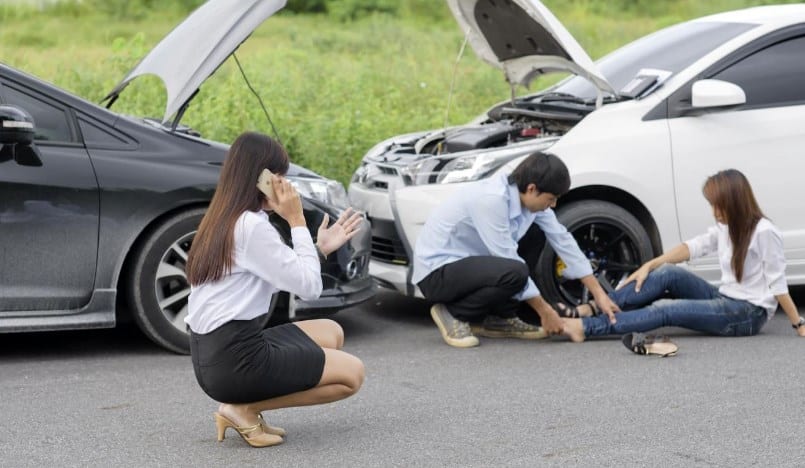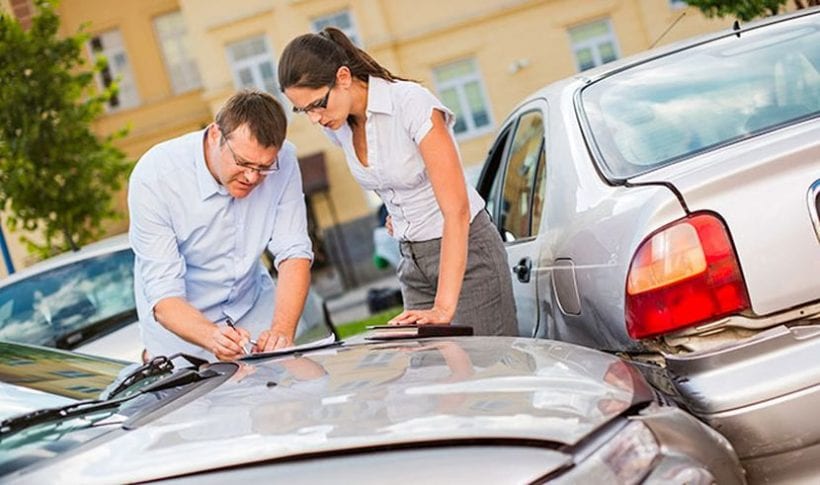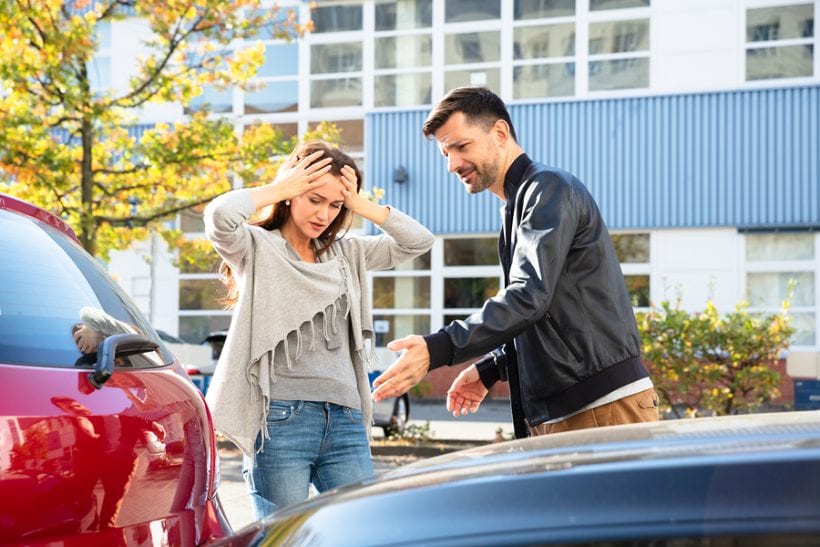Life is unpredictable so, no matter how safe a driver you are, you will likely be involved in a car accident at some point in your life.
From the minor inconvenience of a light prang in a supermarket parking lot to a serious incident requiring emergency services, it’s important for all drivers to understand which steps they need to take immediately following an accident.
1. Check for Injuries

Your first priority after being involved in a crash should be to check yourself and any other involved parties for injuries.
The initial moments after an accident can be overwhelming and confusing, but do try to remember to take a minute to simply assess yourself and your passengers for any broken bones or head injuries. Once you are satisfied no urgent medical attention is needed, check the occupants of the other car and any pedestrians or cyclists who may have been involved.
Do a quick scan of the immediate area to determine whether anyone else may have been harmed. Depending on how the collision occurred, you may not have a clear view of whether a motorbike or other car was involved. If, for example, a motorbike rider was involved, the impact may have thrown them some distance away from the rest of the scene.
If anyone has any serious injuries, or you suspect they have a head injury, call an ambulance.
While checking for injuries is an important first step after an accident, continue to assess yourself for any health issues that may present in the coming days. You’re likely to experience muscle pains and general soreness in the days or even weeks following a crash. Check this blog post for tips on treating post-accident muscle pain.
2. Get to Safety

Depending on where the accident occurred, your vehicle may be blocking traffic or be dangerously exposed to other cars on a busy road.
If it is safe to do so, move your car to the shoulder of the road or pull over as far as reasonably possible.
If yourself and the other driver agree the damage to yourselves and your cars is minor, you may mutually decide to pull into a quieter side street for additional safety. If you agree to move to a second location, note the registration number, make and model of the other car in case the driver attempts to flee the scene. Do not attempt to pursue the other driver yourself—if they flee the scene, simply call the police and file a report.
If you can smell smoke or fuel, do not attempt to move your car and instead retreat to a safe distance and call emergency services.
3. Swap Details with the Other Driver
Once you have confirmed the safety of yourself and those around you, swap personal contact and insurance information with the driver of the other car.
At minimum you need to know their name, licence and registration number, insurer and policy number. Ideally, they will also provide their full home address, email address and phone number.
You probably don’t know your insurance policy details off the top of your head, so consider keeping a notebook in your glove compartment with all your personal information in case of an accident. People are generally shaken up and may not be thinking clearly in the aftermath of a crash, so having all your information prepared will ensure you’re not scrambling in the moment. Don’t forget to collect any critical information from the other driver.
If the other driver is aggressive or refuses to provide their information, simply note their registration number along with the make and model of their car, then call the police and wait somewhere safe.
4. Document Damage and Witnesses

Police and insurance companies love evidence—the more, the better. Now is the time to get your phone out to take photos and video of the damage to your car.
Make sure the visual quality is clear and easy to identify. Use flashlights to eliminate shadows, and take multiple photos at different distances to clearly demonstrate which part of the car is being captured.
Take photos and video of any damage to the other car as well as your own, including audio commentary of where the collision took place. Some drivers may see an accident as an opportunity to have pre-existing damage fixed by insurance, so capturing the condition of the cars at the scene in a high level of detail will protect you from inaccurate claims.
Dashcam footage is invaluable to the authorities in determining who was at fault and which part of a vehicle was impacted in a crash. If you have a dash cam, make sure you save all relevant footage and offer it proactively to the police and your insurance company.
If any witnesses are available, ask if they’d be willing to make a statement, and get their name and contact details. If they are available to wait for police, they can give their statements on the spot instead of attending a police station at a later date. Witness statements are a great way to prevent yourself being wrongfully declared ‘at fault’.
5. Consider Your Options
For some minor fender-benders, the excess required for your car insurance claim or the hit to your insurance rating may cost you more than a basic repair funded by yourself.
If damages are negligible, yourself and the other driver may decide to settle privately without involving the authorities. If this is the case, ensure this agreement is well documented to avoid unintended consequences at a later date.
If the damage is considerable, call the police and consider hiring a lawyer. When police arrive, provide them with an accurate, clinical account of what occurred, but do not admit any fault.
Police may not attend a minor accident if they have other priorities—if this is the case, you will need to attend a police station yourself and file a report.
6. Contact Your Insurer

After a car accident, file a claim with your insurer as soon as possible.
You can submit your claim online or by phone. However, most reputable insurers now have mobile apps that make it very easy to submit all the required information, along with photo and video evidence.
Follow up with your insurer if you haven’t heard back after a couple of days.
Final Thoughts
There are a few steps you need to take in the moments following a car accident to ensure you stay safe and have the best chance of getting your insurance claim approved, but there’s a lot to remember.
Every driver should have an ‘emergency crash kit’ in their vehicle to make sure no critical information is overlooked—keep a flashlight in your glove compartment along with a notebook outlining all the information you might need in the event of a collision.
Simply having an action plan will ensure you’re confident and prepared to collect everything you need to move on with your life after an accident.

